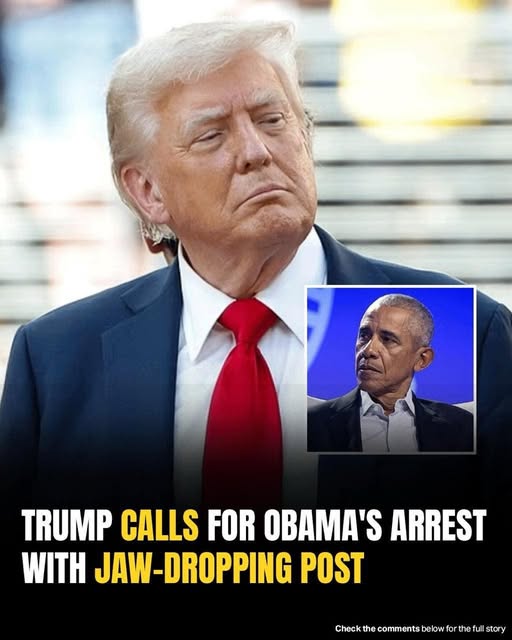Over the weekend, former President Donald Trump unleashed a digital bombshell that has sent shockwaves through social media, political circles, and newsrooms alike. On his platform of choice, Truth Social, he shared a hyper‑realistic AI‑generated “deepfake” video purporting to show President Barack Obama being handcuffed and led away by law‑enforcement officers. No caption. No disclaimer. Just the footage—and an invitation for millions to decide for themselves whether it was real, satire, or something far more insidious.
Within hours, the clip went viral on TikTok, Twitter, Instagram, Facebook and every corner of the internet, prompting a torrent of memes, heated debates, and frantic fact‑checking. At first glance, the video appears shockingly authentic: the lighting, the precise facial expressions and the ambient sound all mirror a genuine news report. Viewers who tuned in without the benefit of context were left scrambling to confirm its authenticity, some even forwarding the clip to friends as “proof” of an unfolding political purge.
But the absence of any official source or explanatory text quickly gave way to skepticism—and then outright outrage. Was Trump offering tongue‑in‑cheek political theater, daring the media to accuse him of staging events through artificial means? Or was he deliberately baiting critics and supporters alike, knowing that the raw power of a deepfake could upend public trust and reshape narratives in an election year? Conspiracy‑minded corners of the internet, quick to find patterns where none exist, whispered about “predictive programming,” suggesting that the video hinted at a darker plot to imprison prominent figures.
Legal experts and media ethicists were swift to highlight the dangers of such content. Deepfakes—AI‑generated videos that swap faces, mimic voices, or fabricate entire scenarios—have evolved so rapidly that even seasoned journalists can be fooled. Without robust regulation, they warned, the line between comedy and propaganda will continue to blur, giving rise to a new era of digital defamation. What happens when a world leader shares a doctored clip, and it’s believed by millions? How do democracies defend themselves when fiction spreads faster than the truth?
This particular deepfake arrived at a fraught moment in America’s political cycle: primary season is in full swing, Trump’s legal battles dominate headlines, and the public’s appetite for sensational content remains insatiable. In prior campaigns, Trump mastered the art of the viral soundbite—memes, incendiary tweets, late‑night television appearances. Now, with deepfakes at his disposal, he has entered uncharted territory where audiovisual manipulation can trigger real‑world consequences, from stock‑market tremors to diplomatic flare‑ups.
Reactions have been telling. On X (formerly Twitter), one user lamented, “This is digital defamation on a national scale,” while another hailed it as “4D chess,” a clever gambit to unsettle the political establishment. YouTube analysts posted frame‑by‑frame breakdowns, marveling at the technology even as they condemned its ethics. Yet President Obama himself has remained silent—an absence that only amplifies speculation about whether and when he might respond.
Beyond the immediate kerfuffle, this episode raises profound questions about the future of political communication. Should social platforms be required to label AI‑generated content, especially when it features public figures? At what point does a manipulated video become unprotected speech rather than harmless satire? And perhaps most crucially, how can citizens learn to distinguish truth from fiction when our eyes and ears can be so seamlessly deceived?
For decades, political operatives have relied on carefully scripted ads and staged events to craft narratives. Now, with artificial intelligence, the script can be rewritten in real time—faces swapped, voices forged, events manufactured. As deepfakes grow more convincing, each of us faces a new responsibility: to question what we see, verify from multiple sources, and remain vigilant against the seductive power of synthetic media.
Even if Trump’s motives were purely to troll the establishment, the viral spread of this video underscores a stark reality: in the digital age, any image, no matter how absurd, can become a catalyst for outrage, confusion, and—inevitably—debate over what constitutes our shared reality. As the dust settles, one truth emerges clearly: we are witnessing the dawn of political theater of a wholly new kind, one where the boundary between fact and fiction is not just crossed but obliterated. And in that realm, no one, not even a former president, is immune from the consequences.
